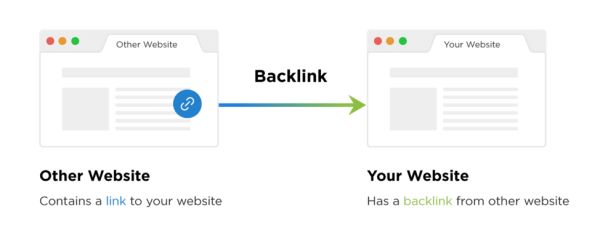There are a lot of things you can do to boost your SEO, but many people don’t consider just how effective deep linking can be.
Deep linking is an SEO strategy where hyperlinks link to a particular web page with specific content rather than, say, the homepage or about page. You can link to a landing page in the hopes of getting new subscribers or you can link to other content on your site that’s relevant to the topic visitors are already on.
When done correctly, deep linking can rank your site higher on search engines, drive traffic to your content, and increase your domain authority. It also improves the user experience by giving them more content to feast on and enjoy without feeling guilty.
Implementing deep linking into your SEO strategy can lead to increased conversions and engagement. But how exactly can you do this? Here are a few ways to get started.
Take Keap's Lifecycle Automation Assessment to identify growth opportunities for your business.
Create, create, create
If you’re going to have a deep linking strategy to boost your SEO, you need content. A lot of it. This doesn’t mean you go off writing whatever comes to mind and sacrificing quality for quantity; instead, you’re going to need a strategy.
One way to create valuable content you can link to is to brainstorm what evergreen content you can create. This is content that will still be relevant and helpful in the years to come because it’ll always be up to date even if written years ago. If you have a food blog, some examples of evergreen content might be “The Easiest Green Bean Casserole Recipe” or “Tips to Create the Fluffiest Pie Crust.”
Look into what your audience wants to know more about and what they’re passionate about. Search Quora and Reddit for these questions if you have trouble coming up with topics on your own. There’s a wealth of knowledge waiting to be explored and explained, some of which you can provide in your own blog posts.
The more content you have on your site, the more options you have to link to when blogging about other topics.
Link to relevant content
Make sure that the content you’re linking to is helpful and, more importantly, relevant. If you write a blog post about baking the world’s yummiest chocolate cake, you wouldn’t then link to a page about the latest soccer game. It’s confusing to readers, it’s weird to Google, and you won’t gain anything from the misdirection you’ve just put your audience through.

So be sure that what you’re linking to within your post tells your reader more information on the topic they’re already looking at. This will add to your authority, increase your rankings, and garner a more dedicated audience.
Robyn Stone, the popular food blogger behind Add a Pinch, does this in her chocolate cake recipe blog post when she links to her chocolate buttercream frosting.

She could’ve simply told her readers that a buttercream frosting would pair well with her cake recipe and moved on; instead, she linked to it, allowing readers to go straight to the frosting recipe and continue browsing her site. This leads to longer engagement from her readers. (You’ll notice we’ve done the same within this article.)
Avoid linking to main navigation pages, such as the homepage, about page, contact page, etc. Constantly linking to the same pages will confuse Google’s spiders that crawl web pages looking for the best and most relevant content to rank on the first page. Without knowing it, you’ll give other sites with better linking strategies higher authority while the rest of your content lags far behind.
Google sees this constant internal linking of the same page or pages and doesn’t take kindly to it. It’s always your best bet to play by the rules when it comes to SEO rankings.
The more pieces of similar content you have on your site, the better your linking strategy, and the better rankings you’ll have in Google.
Be strategic about backlinks
A backlink is when an external site links back to yours, and greatly improves your search engine rankings and gives you higher domain authority. Backlinko has a good visual example:

One of the best ways to earn backlinks from sites with high domain authority is to guest post. Incorporate backlinks in the post to your most valuable relevant content. Take full advantage of your author bio by offering a freebie that will benefit readers and leave them wanting more.
In this example, freelance writer Elna Cain not only links back to her site from her author bio in the guest post but also links to her lead magnet, a free email writing course.

This will bring you organic traffic which Google prioritizes as it shows your site is a natural source for valuable information.
Guests posts are also great because they position you as an expert in your niche even if you just started your blog recently. More eyes will see your content and, knowing they were led to you by an already trustworthy source, they’ll see you as trustworthy too.
An important thing to remember is that 20 percent of your blog posts should be driving 80 percent of your referral traffic. That means that you should focus on linking a few of your most popular blog posts that are gaining the most attention and using those to boost traffic. This will make you appear more natural to Google’s algorithm.
Share your popular content on social media and link back to it. Use the appropriate keywords when describing what the post is about, and if you mentioned anyone, tag them in the hopes they’ll share it on their own platforms.
What’s next
If you’re looking to drive traffic and boost your SEO, deep linking is the perfect strategy to use. Create a linking strategy will prove successful to your business because it allows for better consumer engagement and increases your site’s authority. It’s also simple to implement and will help position you as an expert in your business.
Syed Balkhi is an award-winning entrepreneur and co-founder of OptinMonster, a powerful conversion optimization software. He is also the founder of Awesome Motive the company behind several popular small business software that collectively powers over 3 million websites and serves billions of page views every month.


